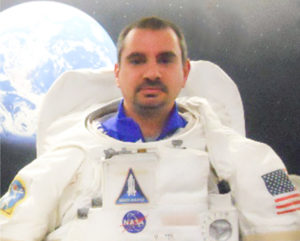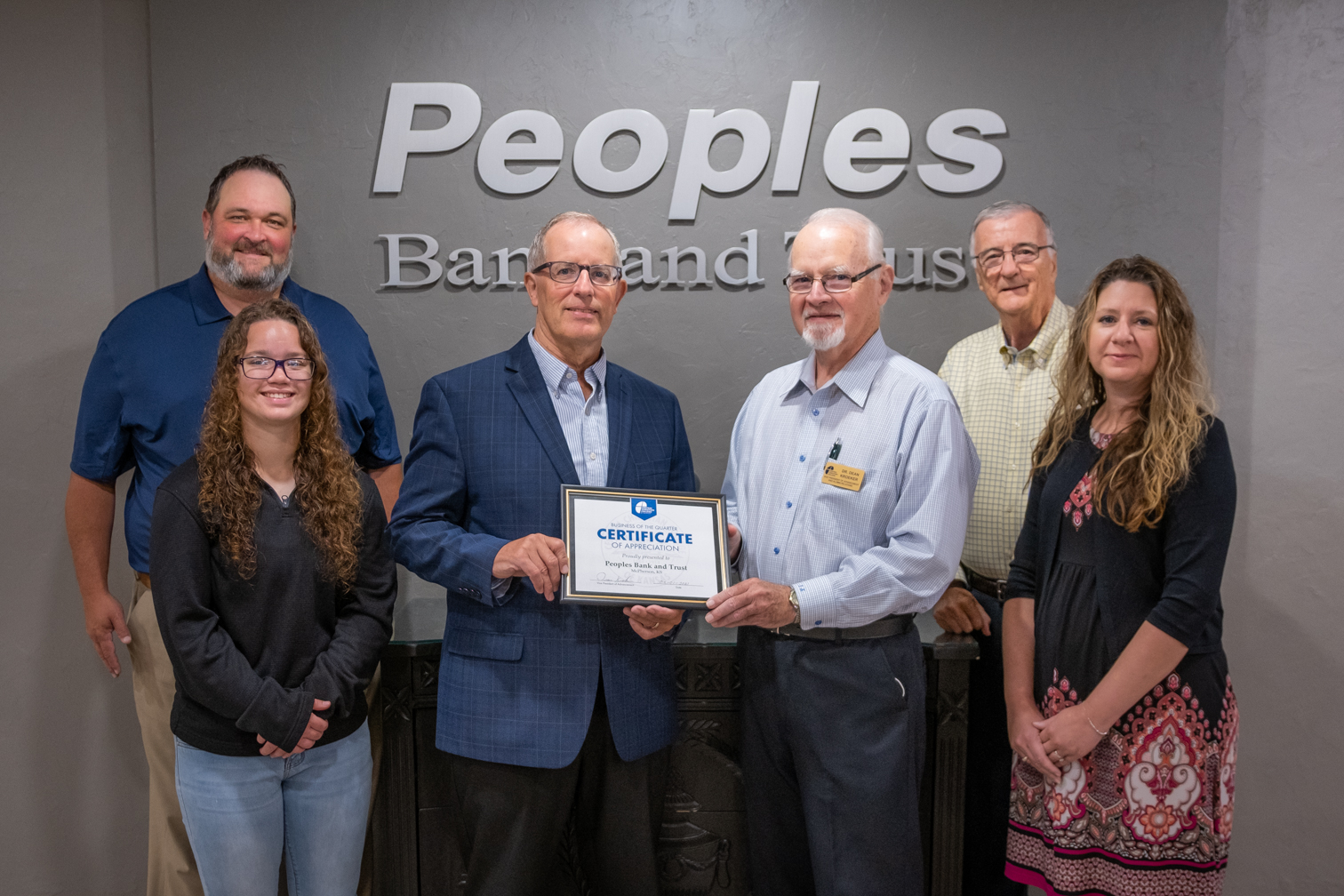Advent Devotional Wonder in the Weariness By President Favara I do not know what this…
Lift Off: Triage to Triumph
 Ever since I was a child, space, space travel, astronomy, rocket science, Star Trek, Star Wars, Battlestar Galactica, Astronauts, Astronautics, etc. etc. – has always held my attention. From science to science fiction – I enjoy the wonder of space, space travel, rocketry, and space science.
Ever since I was a child, space, space travel, astronomy, rocket science, Star Trek, Star Wars, Battlestar Galactica, Astronauts, Astronautics, etc. etc. – has always held my attention. From science to science fiction – I enjoy the wonder of space, space travel, rocketry, and space science.
For a short while, I even taught astronomy and astronautics here at the College, and when I get a little free time you may find me at the Kansas Cosmosphere where I volunteer as part of their education staff.
Of particular interest, both professionally and as a hobbyist, is the Apollo program that spanned the 1960’s.
Putting aside the incredible leaps made in technology and exploration, I am enamored with the fact that the program created a cultural phenomenon that allowed it to transcend the particular aspects of the mission, creating a spirit of wonder, creativity, and unity in our culture.
The moment that President Kennedy, in 1961, set the goal of putting a man on the moon, a shift occurred in the heart and soul of our nation. Not that everything suddenly became great – the ’60s were a patchwork of social and political However, underlying all this was the vision of the Apollo missions, which provided an element of focus, a shared aspiration.
I believe it inspired people to dream – to hope. It provided a rallying point, galvanizing the creative energies of the nation, ushering in a time illustrated by some of most communal acts of creativity, innovation, and ingenuity. It was a time of great invention and great collaboration, resulting in some of the most incredible technological advances and some of the most incredible acts of creativity, born out of cooperation and collaboration.
While I am sure that I could share numerous stories illustrating this spirit, one of my favorite is captured in the movie Apollo 13. Now, while I am aware that the movie Apollo 13 is a dramatization of what really happened, I have read interviews with those that were actually there at the time and they attest to the veracity of the portrayal.
The specific scene I am referring to is that moment when the engineers are presented with the task of literally fitting a square peg in a round hole.
Prior to the scene, the stranded astronauts aboard Apollo 13, who were already faced with insurmountable odds, suddenly realized that their air was becoming increasingly toxic and there was little to be done because the available filters did not fit the accessible mechanism.
Ground engineers were called in to fix the problem. The scene opens with the lead engineer saying, “The people upstairs handed us this one, and we got to come through. We gotta find a way to make this, to fit into the hole for this, using nothing but that.” – pointing to a table of random items and doodads that could only be found in the spacecraft.
There is a momentary pause as the folks around the table absorb the request, evaluate the issue, and then lean in to start executing a plan. No complaints. No Incredulity. No Pessimistic Platitudes. Just an automatic acceptance of the challenge, an immediate commitment to get the job done, and then a collaborative engagement of the creative process.
As we look at our world today, I cannot help but find myself reflecting on the spirit of time like the Apollo missions. Not as a source of nostalgic reminiscing, but as a source of encouragement – a challenge to resurrect that spirit of creativity and collaboration that marked that time in history, which really should not be difficult since we are already endowed with the essential qualities to make it happen.
Let me explain, in Genesis 1:1 we are told, “In the beginning, God created the heavens and the earth.”
So here, in the opening passage of Scripture we are introduced to an essential truth about the very nature of God – that God is a Creator. A designer, who holds dominion and the power to create, which is illustrated in the passages that follow.
As we near the end of the creative process, in verse 26, we discover something else about the nature of God. In that passage, God says, “Let us make humanity in our image, in our likeness”.
So, in some way, bearing God’s image implies that we also bear God’s creative dominion. If we are made in God’s image, and creativity is part of God’s nature, it follows that within the terrestrial, and perhaps even celestial hierarchy, God imparted this creative nature in us, endowing humanity with creativity, authority, and favor.
Now, before I got too far here, let me make sure one thing is clear. I know there is a tendency for some people to tune out when they hear the word “creative” or “creativity”, for we immediately assume creativity is somehow synonymous with artsy – as though creativity was some special gift of God bestowed only on people who major in the humanities.
In like manner, artsy people get all excited when they hear the word “creativity” because for them it ignites their battle-cry to remind folks that STEM (Science, Technology, Engineering, and Mathematics) without ART is a world void of color, prose, and beauty.
I would assert that both perspectives are ill-informed. Being creative is not about some gift, feeling, or mood. Our ability to create, innovate, and transform is a reflection of the divine nature manifested within each of us. In other words, every one of us is born a creative being.
However, the expression of our creativity takes on many different dimensions. Just as a sunset reflects the creative nature of God through the colors, hues, and tones. It also reflects the creative nature of God through the science of fusion, refraction, and light. In other words, creativity is as much the property of analysts and accountants, as it is painters and poets.
All are reflections of the creative nature given to us by God.
Unfortunately, as a culture, we seem to have forgotten – or at least abdicated – this aspect of our nature. We have become encapsulated by comfort, having watered down the creative process to a Google Search.
Perhaps it is time to again become familiar with this aspect of God’s image imparted in us.
Like the Apollo missions, it is my assertion that this is a time to openly embrace our creative natures. A time to reinterpret obstacles as opportunities, in order for discovery and transformation to occur.
That leads me to a second observation found in Genesis 1:26, when God says, “Let us make humanity in our image”. In this passage, we can observe that God is we.
Now, believe me, there is no way that I am going to tackle the mystery of the Trinity here. However, according to the passage, somehow – someway – God is a we – unified in purpose, passion, and power, which implies, if we reflect the image of God, then we have an inherited the same capacity for unity, harmony, and partnership, just like we inherited God’s creative nature.
Think of the creative possibilities that can exist if a group of people choose to unite as one body, serving one Father, praising one Savior, listening to one Spirit, pursuing one mission.
Historians will look back at this moment in human history as an epoch – a turning point in the ongoing story of humanity. Our own 137-year history hints to other moments like this – moments when the stewards of this institution were called upon to work together, to step up and bridge the gap of uncertainty in order to pave a way forward and sustain the mission.
It was their willingness to stand united and creatively focus their energies in order to respond to the needs of the moment.
Are we prepared to do the same?
I am not sure what sparks my hope that we can be that kind of people. Perhaps I still retain some of that bright-eyed optimism of my childhood – that part of me that still looks up into the night sky with childlike wonder, propelled by hope and buoyed by trust in a God that is greater than my simple limitations.
In many ways, we are a lot like those Apollo engineers, facing a similar challenge in which we are called to fit a square peg in a round hole.
- “The folks upstairs (the Triune God above) handed us this one, and we got to come through.
- We gotta find a way to make this (our students – our mission),
- fit into the hole for this (a protest-ridden, COVID sickened reality),
- using nothing but this.” (the faculty, staff, and friends of this institution)
Are we ready to put our plan into action; to unite our hearts and hands, engaging the creative nature we possess?
For whatever reason, for whatever end, for whatever purpose – we are the ones that God has brought to this time and to this place. I challenge us to rise to the occasion, to move beyond the triage that has defined the last few months and let transformation begin.
As Astra per Aspera
President Leonard F. Favara Jr. (CC ’89, ’91)
ABOUT CENTRAL CHRISTIAN COLLEGE OF KANSAS
Central Christian College of Kansas is a four-year collegiate institution that strives to offer Christ-centered education for the whole person through four core characteristics: heart, soul, mind, and strength. Its history dates back to 1884, and it is located in the friendly town of McPherson, Kansas. Central is a strategically small college that offers over forty areas of residential study and a thriving online program for non-traditional students. To learn more about Central, go to centralchristian.edu/about. Visit the Foundation of Central Christian College to see what projects and events are coming up.








